The Age of Empires extends beyond the classroom limits to an entirely different era

More stories from Lauren Brace
The green team in action on the final battle day
One simple question received 15 years ago by history teacher Brad Anderson took curiosity to an entirely new level, eventually prompting a 15-day response.
“Somebody asked what it was like to fight in the phalanx,” Anderson said, “so I walked the kids down to the gym. We took cardboard, made shields, and I did some very basic phalanx training. The next year, I had them spend the day making a symbol, the name of a community, and a motto. Then, it expanded and went from one day to two days to five days, and now it’s a 15-day project.”
This project, which stemmed from one question, is now affectionately known around FHC as the Age of Empires. The historical and immersive experience incorporates elements from the Greek, Roman, and Persian empires, transporting students generations into the past where they are tasked with establishing their own empires.
The majority of the game takes place outside the school in a wooded area with a mini creek dividing the terrain into two territories: Green team and Gray team. In their new environments, students are tasked with creating an empire name, symbol, and motto, along with establishing laws and leaders.
Other aspects of the game include constructing shelters, statues, and protection against various threats to their survival. Above all, however, their biggest threat comes from their opposing team. In such an intense competitive scenario, World History students are quick to find loopholes in the game to vanquish the enemy side.
“It’s funny because when young people are left to their [own] devices and their own experiences, they’re going to find ways to come into conflict with the other groups,” Anderson said. “They’re [going to] look to conquer . . . Instantly, they’re in this world where they are no longer eleventh graders; they are a part of their empire.”
As the Age of Empires places students in a competitive, historical scenario, it not only enhances their learning experience but also propels them to work creatively as a team. Junior Ty Hudkins had a first-hand account of this as a leader of the Green team’s “Mighty Bucks.”
His group seemed to prove their motto, “They make the cents, we make the bucks,” as they sabotaged the Gray team with a full-force attack.
“The first day when we were allowed to battle, we launched a full-blown attack and raided the Gray team,” Ty said. “We took everyone hostage, and we basically ended the day from there. We almost had to restart, it was really cool. We had to make a treaty where they were prisoners for a week.”
With an oligarchy system of government, Ty continued to collaborate with his other classmates on a variety of other challenges and battle plans. For him, the Age of Empires provided a thrilling break from the usual classroom environment as the students came together and decided their own destinies.
Now, the Age of Empires is really unique; it’s really hard to top, so I’m glad for it to be a rite of passage at [FHC].
— Brad Anderson
“The learning is like nothing I’ve ever done before,” Ty said. “Being outside for two weeks was really cool . . . In my group, I got to become friends and [become closer] with people I’ve never been friends with before.”
Combined with Anderson’s AP World History, students from history teacher Kyle Carhart’s classes also experience the same cooperative unity. Together, the teachers immerse students in a project unparalleled to any other. Refusing to let learning history slide into what students would consider a boring and monotonous routine, they literally throw themselves into the empire simulation.
From Carhart’s class, junior Katie Cushman fondly remembers when the teachers ran around the woods infecting students with the “plague.” Returning from captivity, Katie led the “Great Lakes Slayers” team in a united front against the contagious disease.
“We stood in lines guarding every entrance,” Katie said. “We had our shields together, and everyone was just pushing against the teachers when they tried to get in. It was everyone working together, and everyone was guarding our little area.”
If students survive the plague, they move on to the Day of Games where both teams select members to compete in pumpkin tossing, spear throwing, archery, and gladiator challenges. Watching a reenactment of a gladiator duel was something Katie never expected to witness, but she found the event very entertaining.
“We all stood in a giant circle,” Katie said, “and it was just two people trying to touch each other with these little swords. We were getting aggressive, and it was so funny.”
Finally, before the game ended and the students returned to video and textbook learning, a culminating dodgeball tournament marked the climax, in which all six hours of Green and Gray teams gathered in a small outdoor plot of grass for an epic affray of shields and launched projectiles.
If anyone’s curious, the Gray team won.
Overall, when there’s a lack of excitement in the curriculum, the Age of Empires provides a hands-on engagement that everyone can look forward to as variously decorated shields wander the halls. From foraging for supplies to intense battle showdowns, developing an empire outside in the woods is an opportunity that will never be forgotten by the World History students at FHC.
“I very much encourage students to have these experiences: throw themselves into them and suspend disbelief,” Anderson said. “School can be an adventure, and what I tried to figure out is about once a month, we’re doing something that is going to get your blood boiling or get you interested or engaged. Now, the Age of Empires is really unique; it’s really hard to top, so I’m glad for it to be a rite of passage at [FHC].”

Lauren is a senior entering her final year on The Central Trend as Podcast Manager. She has a strong passion for every extracurricular she's involved in,...





















































































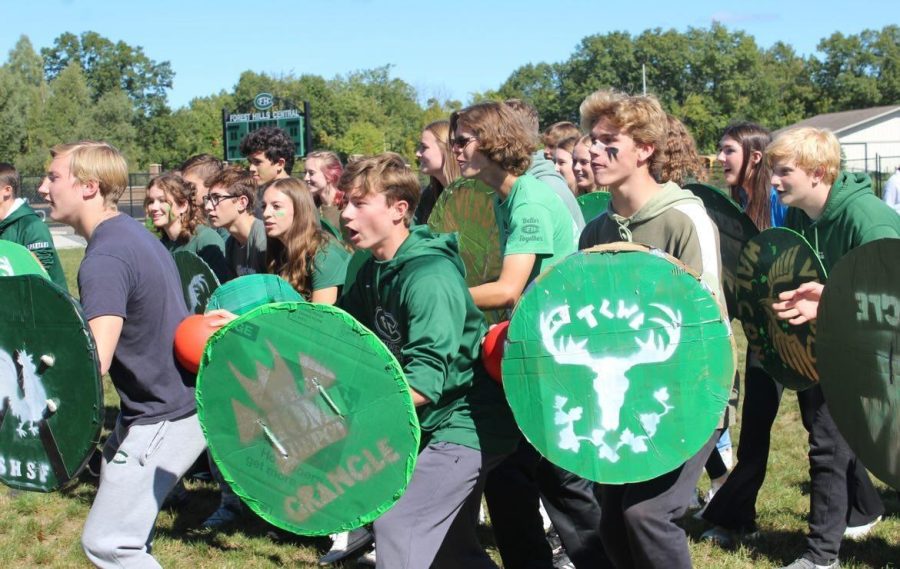
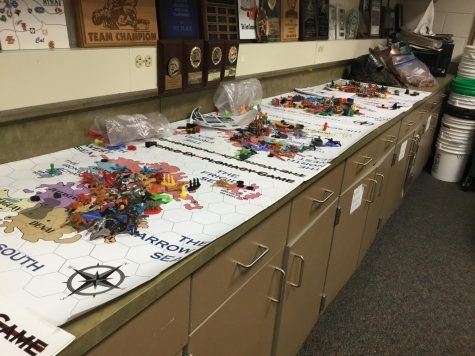

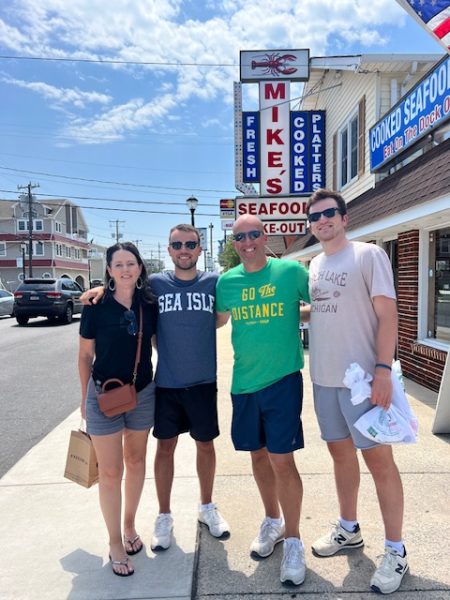
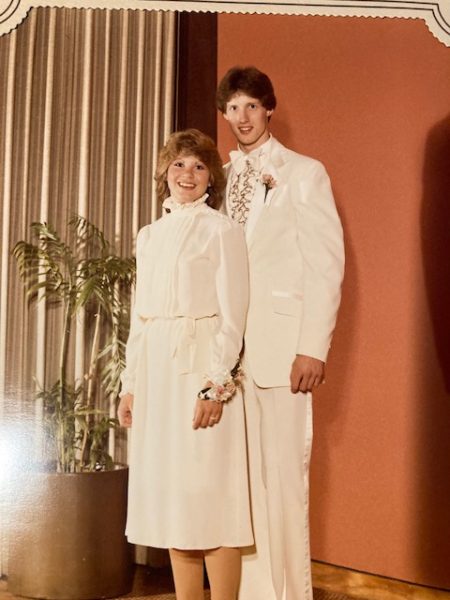


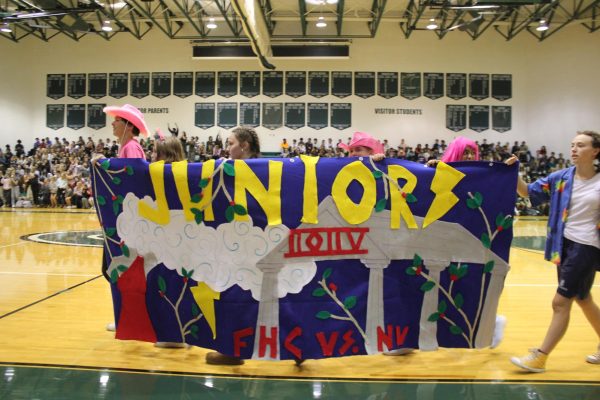
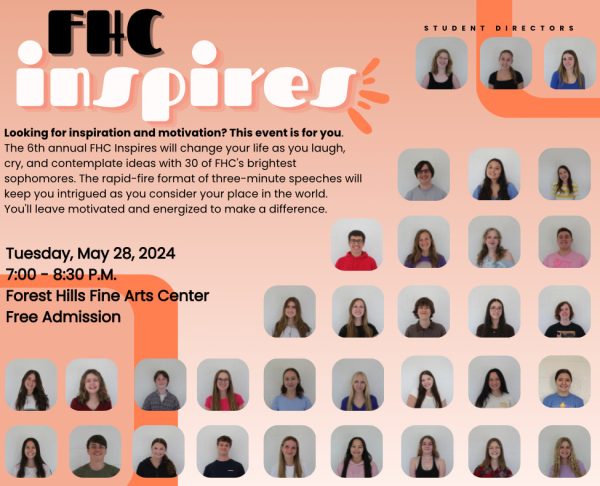
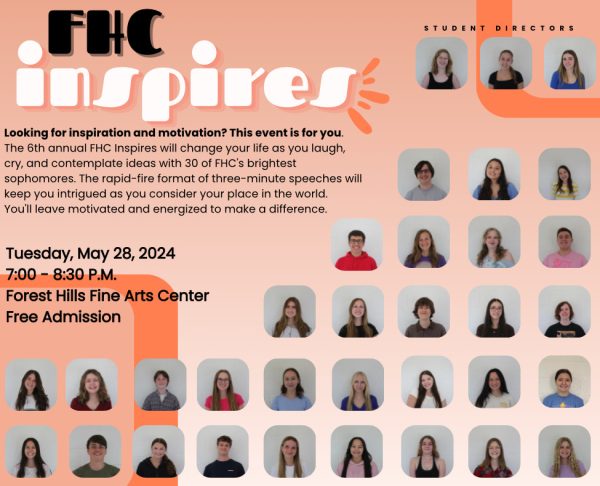

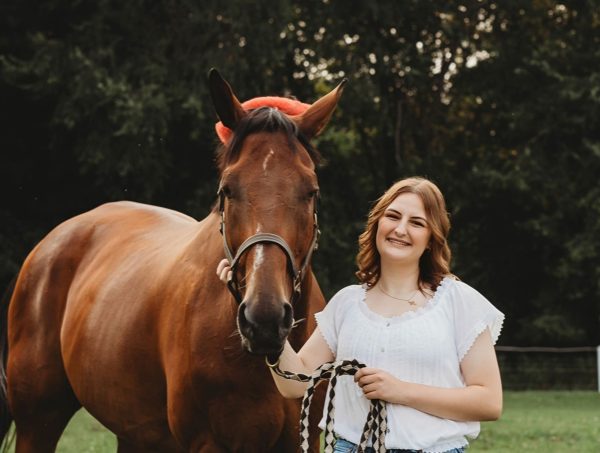
Angie Brace • Oct 5, 2022 at 8:08 pm
Excellent Article ! It is great to read how students get to act out the age of empires. What a fun way to live history.
Anna • Oct 4, 2022 at 8:43 pm
Great article, Lauren!! What a fun and engaging experience for the students!!
Ren • Oct 4, 2022 at 11:25 am
Lauren, you are such a talented writer. You impress me day in and day out.